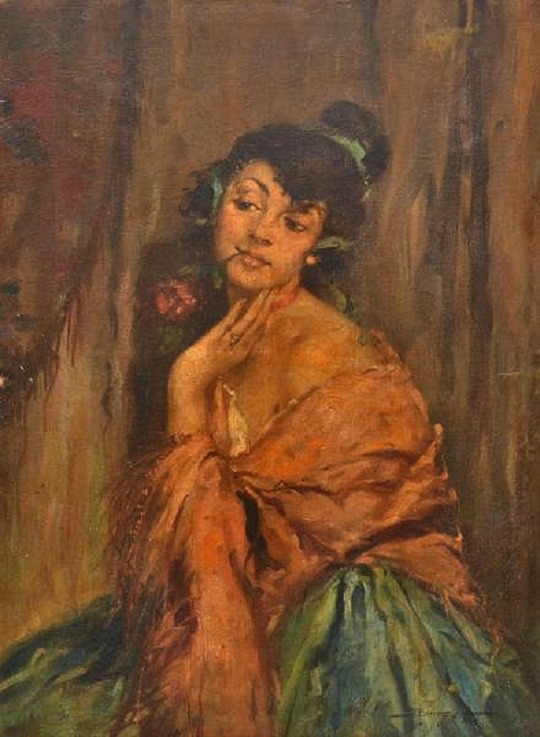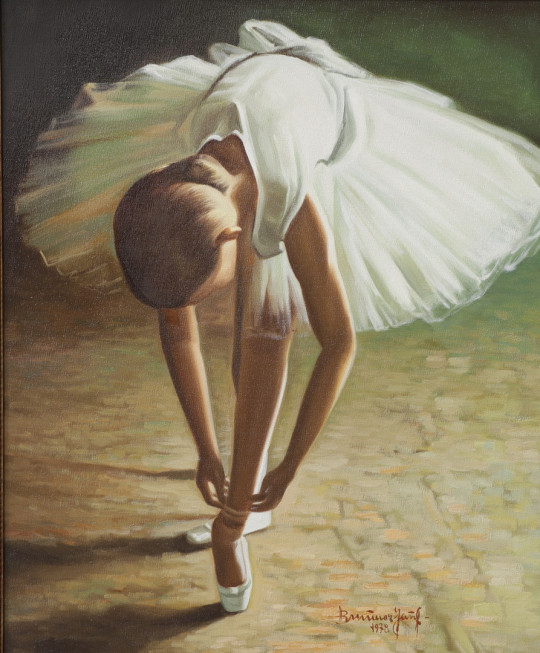#Josef Brunner
Text

#artist is sebastiano de piombo#artist is frederique brunner#artist is quinten metsys#artist is fatima ronquillo#artist is bartolomeo veneto#artist is louis jean francois lagrenee#artist is joseph dorffmeister#cant find the artist#this piece is from the workshop of rubens#artist is sophie anderson#-cant find the artist#artist is hieronymus bosch#aartist is hubery van eyck and jan van eyck#artist is m k ciurlionis amzinybe#artist is clive hicks-jenkins#artist is max bruckner#artist is hermann hendrich#artist is edward steichen#artist is john william waterhouse#artist is antonin hudecek#artist is sir frank dicksee#artist is louis welden hawkins#artist is romaine brooks#artist is anna & elena balbusso#artist is armand point#artist is francesco balsmo#artist is dean cornwell#artist is alexander rothaug#artist is josef manes#artist is edmund dulac
1 note
·
View note
Text
SS blood group tattoo

These are some facts and curiosities about the SS blood group tattoo:
The SS blood group tattoo was applied, in theory, to all Waffen-SS members, except members of the British Free Corps.
The purpose of the tattoo was to identify a soldier's blood type in case a blood transfusion was needed while unconscious, or his Erkennungsmarke (dog tag) or Soldbuch (pay book) were missing.
Not all Waffen-SS men had the tattoo, particularly those who had transferred from other branches of the military to the Waffen-SS, or those who transferred from the Allgemeine SS, the "General" or non-military SS. Some non-SS men also had the tattoo: if a member of a branch of the Wehrmacht was treated in an SS hospital, he would often have the tattoo applied.
Although the tattoo was widely used in the early war years, over the course of the war it was gradually applied to fewer and fewer soldiers, and towards the end of the war, having the tattoo was more the exception than the rule.
When the war ended, the Allies were keen to catch all Waffen-SS members on account of the high volume of war crimes committed by some units. The blood group tattoo helped greatly in identifying former members
Some members of the SS who evaded capture in part because they did not have the blood group tattoo included Josef Mengele and Alois Brunner.
Some (former) SS members tried to remove their blood group tattoos by various means, including surgery, self-inflicted burns and even shooting themselves there (the U.S. Army published a pamphlet on how to identify self-inflicted wounds to this part of the body
Sources:
Wikipedia: SS blood group tattoo
❗❗I DON'T SUPPORT NAZISM,FASCISM OR ZIONISM IN ANY WAY, THIS IS AN EDUCATIONAL POST❗❗
48 notes
·
View notes
Text
The two captors of the Dutch family held for 9 years had both been members of the Family Federation or Unification Church
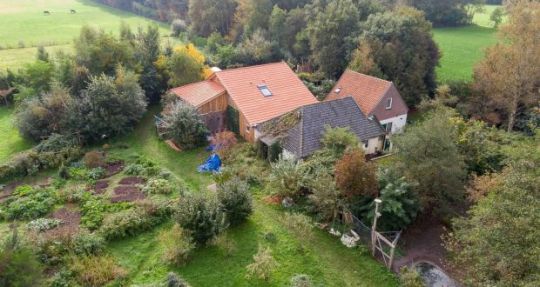
Published October 17, 2019. Updated October 18 - 22, 2019.
‘John Eagles’ is Gerrit Jan van Dorsten – who ‘imprisoned’ six of his own children on a farm.
Police have rescued six young adults (four women and two men, aged 18-25) of the van Dorsten family living at a remote Dutch farm. Police were alerted when Jan Zon van Dorsten, a 25-year-old man, walked into a local bar. He looked dirty and was wearing old-fashioned clothes. He said he had not had a haircut in nine years. The bar-owner raised the alarm with police after Jan revealed he had never been to school and said he had run away and needed help. He said he wanted his lifestyle to “come to an end.” Jan said he was the oldest of the six children.
The Police came to investigate on Tuesday and found a hidden staircase behind a cabinet in the living room of the farmhouse. At the point when they were discovered, the five other siblings thought that they were the only people left on earth, the broadcaster RTV Drenthe reported. According to reports, they could barely speak and communicated in a “fantasy language” parts of which were “incomprehensible.” The father of the six young adults, Gerrit Jan van Dorsten, 67, was found bed-ridden. He had suffered a stroke about two years previous.
Josef Brunner, 58, who had rented the farm was arrested at the property. Reports say the farm was equipped with motion detectors and security cameras. Locals also claimed Brunner locked the gate and kept watch using binoculars. He’d reportedly chase away anyone who came too close to the secluded property.
After the young adults were released and living in a safe place, the former ‘prisoners’ were observed to be taking part in frequent rituals where they moved in circles. They were then taken to a more private safe location where they are being given appropriate care. The police want to understand what happened over the past decade, but are being considerate of their psychological needs.
Josef Brunner appeared before an examining magistrate on Thursday and was detained for 14 days on suspicion of unlawfully depriving the children of their liberty and money laundering. Later, Gerrit Jan van Dorsten was also arrested.
Brunner was born on March 3, 1961 in Waldhausen, Austria and was one of five peasant children. He completed a carpentry apprenticeship with distinction, but while enrolled in the army in Linz he joined a sect.
He met a Japanese woman who introduced him to the Unification Church (now the Family Federation for World Peace). He had two children with her. Through the ‘Moonies’, Josef Brunner came into contact with Gerrit Jan van Dorsten in the late 1990s. Gerrit Jan had been a member of the Unification Church in the 1980s. He left in 1987 but to this day he still embraces many of their ideas. LINK
Together Joseph Brunner, known as the Austrian, and Gerrit Jan moved to the farm in 2010. Joseph was a carpenter and lived in a caravan behind his workshop. It was some four miles from the farmhouse. Neighbors saw him regularly visit the farm in his Volvo where he dropped off groceries and supplies.
Joseph Brunner’s brother, Franz, claims Joseph became delusional after joining the Unification Church. He said, “Josef has a very strong persuasiveness.”
Franz said Josef had been married to a Japanese woman.
“In 2006 or 2007, Josef left his wife and children behind in Austria and went to the Netherlands.” Franz told NL Times.
“Josef regularly visited Gerrit Jan van Dorsten with his wife and daughters.”
“Josef’s daughters, now adults, tried in vain to get in touch with him in 2017.”
The two arrested men had close business ties. Brunner paid the rent on van Dorsten’s toy craft store in Mepple and another storage unit nearby – as well as the rent for the farm.
According to a van Dorsten family statement. “Eight years ago, three older children of Gerrit Jan – Dino (Endino), Shin and Marjan, 29 – fled the family in Hasselt and contacted their brother from a previous marriage, their grandparents, uncles, aunts, and cousins.”
"The family has taken notice of the events in Ruinerwold with dismay," the statement, translated from Dutch, says.
"Mr Gerrit Jan van Dorsten broke all ties with his immediate family in the 1980s. He told us not to make any attempt to find his place of residence."
"At present, it is the express wish of the family to support the discovered family," the statement said.
Gerrit Jan’s children were never registered with local officials or went to school.
Janny Knol, North Netherlands deputy police chief, said "on the farm there was actually a separate, closed-off area and its main aim was to keep the outside world out," she told Dutch TV.
She said the imprisoned family were kept in an 'enclosed space' that was 'divided into small compartments.' The room was hidden behind a staircase, behind a locked door. Daylight was allowed inside, and children were occasionally allowed into the yard but they didn't go beyond farm's perimeter fence during nine years of captivity. She said, “We are investigating whether a certain religion or philosophy forms the cause of their living situation.”
Police found “tens of thousands of euros of laundered money” hidden on the property.
Jan Zon van Dorsten, 25, stated that his mother died in 2004 and “every day we are happy to take care of Dad”.
Gerrit Jan was initially believed to be one of the victims of Josef Brunner, but he has now been charged as “co-perpetrator of unlawful deprivation of liberty and of abuse, in the sense of prejudicing the health of others and money laundering.”
When Gerrit Jan and his brother, Derek, both joined the UC in the 1980s, their devoutly Protestant parents were very much against it. The father was a prolific author of Christian novels. Gerrit Jan was active in the UC in Amsterdam.
Gerrit Jan van Dorsten was a member in 1984. He worked as a Munich correspondent for the New York City Tribune at that time.
Gerrit Jan left the Unification Church in 1987. His estranged brother Derek van Dorsten, a long-time member of the UC said, "I have not heard from my brother since 1984."
A Church spokesman, Willem Koetsier, said “Sometimes people with spiritual inclinations found their own church or movement. I think this was the case with him. It could be that he thought he had a special mission.”
After a few years in the UC Gerrit Jan appears to have become ill at ease. According to reports in the Dutch media, he retreated from the church after announcing that he had begun “receiving signals” from Moon’s son, who is regarded as a prophetic figure within the faith. That son was Heung Jin Moon who had died in a car accident on January 2, 1984.
Heung Jin was buried in Korea on January 8, 1984. A week later, Rev. Moon proclaimed that his son had a new mission and that he was free to travel between his spirit world and our physical world. Rev. Moon also proclaimed that Heung Jin became a leader to Jesus in the spirit realm and that he had assumed the role of “the commander-in-chief” to those who are unmarried in the spirit realm.”

▲ Sun Myung Moon wrote this calligraphy for his son: “Absolute Victory of Moon Heung Jin 文興進 as Commander-in-Chief of Heaven.”
On February 28, 1984, Heung Jin was married postmortem to Hoon-Sook Pak, the daughter of Colonel Bo Hi Pak, one of Moon’s top aides.
Colonel Pak was the president of the Washington Times at that time.

▲ At the wedding Julia Hoon-Sook Pak held a photograph of her new husband.
Colonel Pak stated that his son-in-law’s sacrifice “carries far greater importance then the crucifixion of Jesus Christ.” According to Rev. Moon, his son needed to be married in order to move from prince to king in the spirit realm. Hoon-Sook was positive about her unusual marriage. “I will never forget in my whole life and for eternity this greatest honor of being Heung Jin Nim’s bride, which I do not deserve.”
Shortly after the death of Heung Jin, Unificationists in different parts of the world claimed to be receiving messages from him. Most of the alleged revelations took place in 1984, and in 1987 and were published in book form under the title The Victory of Love.
Revelations are also claimed from St. Francis, St. Paul, Kierkegaard, and Jesus. The last speaks both of his submission to Heung Jin and the True Parents. “I will show them that the Lord of lords and the King of kings and the king of glory is our precious Lord Sun Myung Moon and his beloved bride Hak Ja Han. They reign as king and queen of the entire universe. I, Jesus of Nazareth, known as the Christ, bow in humility before them. Any who will follow me must do the same.”
From 1984 Gerrit Jan also received messages from Jesus and Heung Jin Moon.
According to Algemeen Dagblad, Gerrit Jan ascribed “supernatural powers” to himself.
Older Unification Church members who knew Gerrit Jan in the 1980s had described him as a very "ritual" person who had set up his own group with his family.
Gerrit Jan’s wife, the mother of nine known children, died in 2004. It is possible he has even more children, the newspaper reported.
In an interview with De Telegraaf, a cousin said, “Gerrit Jan broke with the rest of the family a long time ago,” the 32-year-old cousin said.
“About thirty years ago anyway. There was a lot of disagreement between my parents and my uncle, and between my uncle and the Unification Church. At a certain moment he ran away angry. That was before I was born.”
Joseph Brunner and Gerrit Jan van Dorsten lived next door to each other in Hasselt, south of Ruinerwold before moving to the farmhouse in 2010.
Shortly after Brunner moved in next door to the van Dorsten family, they removed a fence that separated their backyards, according to a neighbor, Sandra Soer. Brunner left the block first, and then in 2004, Geert announced his wife had died of colon cancer, which came as a shock as no one knew she had been sick, Soer said. The family left not long after.
In an interview with the Netherlands' English language news outlet NL Times, the older brother of Josef Brunner said he was not surprised to learn his brother had been arrested.
Franz Brunner described Josef as "greedy, calculating and unpredictable" and the pair had not been in contact for a decade. "He always wanted money and was always after his own advantage.”
The brothers quarrelled over their parent's farm and fell out with Joseph moving out.
In Austria, Josef's brothers told the Kronen Zeitung website that he had joined a sect and had not turned up for the funerals of his parents in the past four years. "He thought he was better than Jesus," brother Franz told the paper. “We've had no contact with him for 10 years. I told him to get lost when he wanted me to become his financial guarantor.”
Police have admitted going to the farm in the past, following up reports of a cannabis farm on the property, but say they never entered the building.
A team of 30 police are now trying to solve the mystery of the farm at Ruinerwold. The farmhouse is still being investigated and other properties have also been searched.
Police will question Gerrit Jan van Dorsten why he reported to Dutch immigration in 2009 that he had emigrated.
A large white board found pinned to a wall had a series of mysterious drawings and numbers in black felt ink. They went from top to bottom, side-to-side and ran across each other without making any sense. The board, and a set of books and records kept by the two men, have been taken away by detectives for analysis and forensic examination.
Police have brought in thermal imaging cameras to search under the soil of the fields around the farmhouse and sniffer dogs to examine underneath floor boards.
In a statement the police said, “We are investigating whether a certain religion or philosophy forms the cause of their living situation. Currently, a great deal of new information is received by us every day. It is our duty to verify the veracity of this information, and its relevance for our investigation. The circumstances the suspects and persons involved lived in require that we be extra careful when conducting our investigation.”
________________________________
‘John Eagles’ is Gerrit Jan van Dorsten – who ‘imprisoned’ six of his own children on a farm.
John Eagles video: “Each Soul is a Mirror”
Gerrit Jan van Dorsten, ‘Father Moon’ and the Divine Principle in his providence
Suspected of sexual abuse, ‘John Eagles’ aka Gerrit Jan van Dorsten is father of all nine children
Rev. Young Whi Kim testifies about Gerrit Jan van Dorsten
Jessica Villerius is making a documentary about the van Dorsten children of Ruinerwold
“Five beers and a plea for help is all it took” – Frank F
January 21, 2020
Gerrit Jan van D. sexually abused two of his children in Ruinerwold
________________________________
Black Heung Jin Moon – Violence in the FFWPU
The FFWPU / Unification Church and Shamanism
Hong Soon-ae, the mother of Hak Ja Han, was jailed for killing a young man in a shaman ritual
The FFWPU is unequivocally not Christian
A Korean perspective on Moon and his ‘Fall of Man’ teaching
How “God’s Day” was established on January 1, 1968
Rolling Stone: Children of Recluse Dutch Family Thought They Were the Only People Left on Earth
https://wikimili.com/en/Heung_Jin_Moon
#FFWPU#prisoners#Unification Church#Moonies#Netherlands#Gerrit van Dorsten#Family Federation for World Peace#Ruinerwold#Josef Brunner#John Eagles#captive children
5 notes
·
View notes
Text
#NextWirtschaftswunder auf der heutigen virtuellen #NextAct
#NextWirtschaftswunder auf der heutigen virtuellen #NextAct

“Ein Virus reißt die Weltwirtschaft in eine Jahrhundertkrise. Schon vor dieser Krise stand die Rezession vor der Tür, hatte Deutschland die niedrigste Innovatorenquote seit Beginn der KfW-Analysen 2002, erlebten Tausende Zombie-Unternehmen Scheinblüte wegen Niedrigstzinspolitik. Schon vor dieser Krise mangelte es der Automobilbranche an Transformation und der Gründerszene an Skalierung”, schreibt…
View On WordPress
#Deepa Gautam Nigge#Eric Kletti#Heinrich Arnold#Josef Brunner#Myriam Jahn#NextAct#NextAct2020#Thomas Sattelberger#Winfried Felser
0 notes
Photo
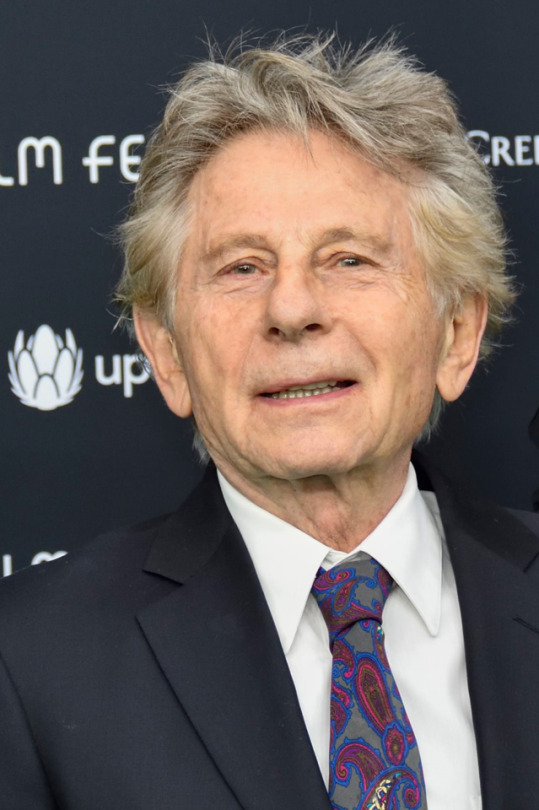
Roman Polanski at the Zurich Film Festival 2017. Photo by Josef Brunner
#Roman Polanski#Josef Brunner#Roman by Josef Brunner#zurich film festival#2017#zurich film festival 2017#zurich#film festival
2 notes
·
View notes
Photo
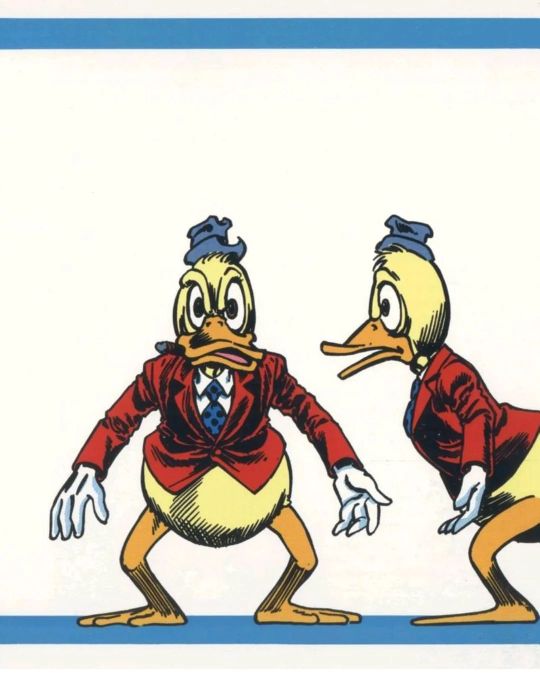
Howard the Duck! . What is your favorite Howard the Duck Story? . 1st - 4th slide is from the Official Handbook of the Marvel Universe v3 2 (1990) by Keith Pollard and Josef Rubinstein. 5th slide is by Steve Leialoha. 7th slide is from Howard the Duck 1 (1976) by Frank Brunner and Steve Leialoha. . #howardtheduck #duck #frankbrunner #steveleialoha #70s #90s #spiderman https://www.instagram.com/p/Cc_YbhbMtaf/?igshid=NGJjMDIxMWI=
2 notes
·
View notes
Photo


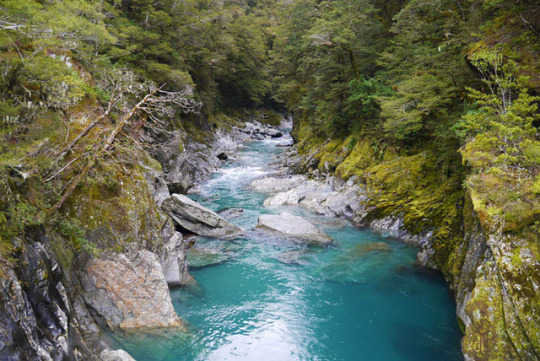
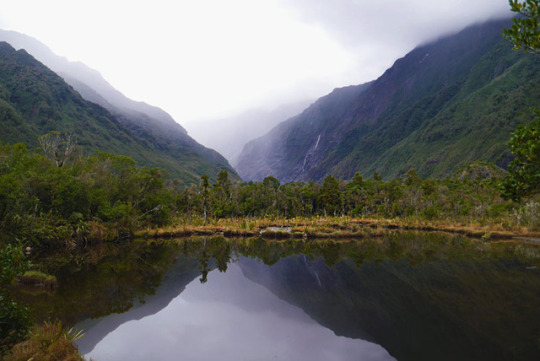


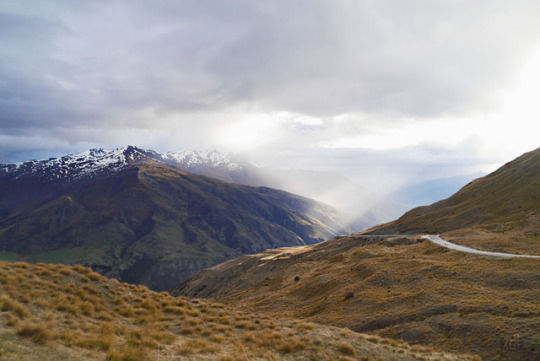
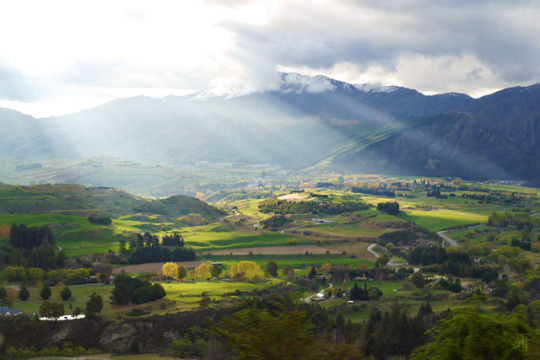

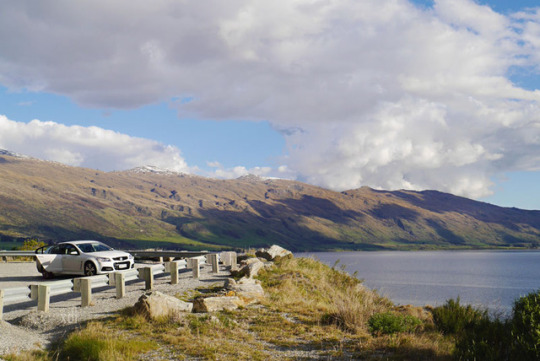
South Island Road Trip
October 2016
I’ve long held a romanticism for the idea of the road trip holiday. Driving through the country with good friends, keeping to no one’s schedule and detouring when you feel like. It’s the sort of experience that feels like you have to have while you’re young -- which is a silly young person thought; as I get older I find that the desire to have fun adventures never quite dissipates. But still, in this moment, without the obligations of children, a mortgage, and only my mild anxiety regarding the future as company, this felt like the perfect moment to finally have my road trip holiday.
I will remember driving down the state highway between Springs Junction and Arthur’s Pass and marveling at how gorgeous the New Zealand mountains are. When I travel around the world and tell people I’m from NZ, they always remark on the beauty of this country. But it’s hard living in the middle of it all to notice what’s so special about a place on a day-to-day basis. This was one of those times when I really understood what the rest of the world sees in NZ. That effortless natural beauty; scenery that preens with each traveller's admiring gaze.
Later, we would drive past Hokitika in the late afternoon, sun finally shinning for a sustained period, and I would find it incredibly funny that the theme music for this trip alternated between death metal and Christian pop. I learnt the careful balance of tact required to keep the peace between my friend who listens to death metal and the friends of my other friend who were dedicated to Hillsong. My own contribution to the car’s entertainment was a special episode on gay sex (which one?) from the Two Dope Queens podcast, so you can guess where I fell on that spectrum.
I will remember standing on the side of the road with my friend’s friend, waiting for the others to pick us up. I remember taking a series of Instagram photos for her, while she looked off into the distance and played with her hair. I remember her telling me that she doesn’t have a problem with gay people as people really, she just can’t support their immoral lifestyle. And I remember thinking, what is it about me that makes a near stranger feel comfortable enough to say that?
Never again will I want to drive through the twisting, unpredictable mountains to Te Anau late at night, with only our car headlights and the overcast moon for guidance. Milford Sound was as beautiful as always, but the rain set in just as we reached Glenorchy and onward to Queenstown. I gained an appreciation for chardonnay and have started switching out my usual sauv order. I learnt I need to be more fit to survive an all day hike, and miraculously I have actually been much more active since. I will remember the ghost chicken, who ran into our car in a cloud of feathers -- me and death metal friend screamed in fright on impact, while the Hillsong enthusiasts slept soundly in the backseat. That chicken was missing when we drove back and death metal friend was optimistic that it limped away (I was far less so).
New Zealand was strangely devoid of Asian people outside of the tourists in Queenstown, and that’s something I never miss upon return to Auckland. The ability to blend in on the streets; to breathe easy in your anonymity. This road trip made me appreciate the beauty of NZ’s environment, but once again cemented my realisation that I could never live outside of a big, multicultural city. I met an Asian woman in Blenhem at a vineyard who had moved down from Auckland a decade ago for the peace and quiet. You trade in the traffic, she said. To be the only Asian face in the town. She was the only Asian person we met until my friends determinedly headed to a Chinese restaurant for lunch in Christchurch days later. Imagine that.
#new zealand#south island#on the road#Travelogue#Queenstown#Milford Sound#Cardona#Wanaka#Haast#Franz Josef#Springs Junction#Lake Brunner
1 note
·
View note
Text
Third Reich Biographies: SS-Hauptsturmfuhrer Waldemar Hoven (Part One)

One of the concentration camp doctors that fascinated me was Waldemar Hoven. He was one of the doctors at KZ Buchenwald along with Erwin Ding-Schuler and Joachim Mrugowsky. Hoven was convicted at the Nuremberg Doctors’ Trial and hanged at Landsberg Prison in 1947.
Waldemar Hoven was born in 1903 in Freiburg am Breisgau to Peter J.M. Hoven and Carola Hoven. His father had been a professional soldier and he left the army in 1902 with the rank of deputy sergeant to become a postal secretary. In 1910 Hoven’s parents built a luxury sanatorium in a district that became known as the Villa Hoven.
In 1917 (so when he was about 14 years old) Hoven attended a boarding school in the Black Forest area in Germany that was also attended by a lot of foreign students. It was probably this that inspired him in 1919 to leave school and leave Germany to live in Sweden and Denmark. He even lived for a time with a German family on a farm in Minnesota, USA, where he worked as a farmer. He also worked as a movie extra in Hollywood during his time in the USA as well.
In 1925 Hoven returned to Freiburg, where he worked in his parents’ sanatorium doing office work. He remained in Germany until 1930, during which he married Emmy Brunner, the daughter of a merchant named Josef Brunner. Emmy had been engaged to another man at the time, and broke her engagement to be with Hoven. In 1928, she gave birth to the first of their three children. In 1930, Hoven’s father died, and his mother continued to run the sanatorium with the help of her other two sons, Erwin and Hans Hoven, who were both accomplished doctors. Waldemar, however, left for Paris, where he worked as a company reporter “publishing news about social life” (so probably tabloids) for a rich baron called Baron de Meyer. According to the evidence collected by SS Judge Konrad Morgen in the 1944 Buchenwald corruption trial, it was around this time that Hoven had an affair with an American woman in Paris, who gifted him a gold cigarette box decorated with precious stones worth 25,000 RM (about $62,500 USD).
After he returned to Germany, Hoven tried his hand at film production. According to the Handelsregister Berlin HRB Nr. 47334, he founded a film company, for which Baron de Meyer was involved as an artistic adviser. According to entries in Film-Journal", Nr. 37 und 38, Jg. 1932, he produced two works: “The Beggar of Paris” and “King Ludwig II of Bavaria”, neither of which made it into theaters. In 1933, Hoven’s brother Hans died, and Waldemar was called back to help out at the sanatorium in Freiburg.
Hoven later passed his Abitur in 1935 and began to study medicine at the University of Freiburg. His license to practice medicine was given to him as a war emergency license in 1939 after he was drafted into the Waffen-SS. Waldemar Hoven had already joined the SS in 1933, one year after he began to study medicine. According to a later statement made by his mother Carola Hoven, his brother Erwin had joined the NSDAP in 1932, and the SS the following year. As of 1938, Erwin Hoven had held the rank of Untersturmfuhrer and in 1942 the rank of Obersturmfuhrer. As a result of Erwin Hoven being the authorized signatory and managing director in the family business, the Hoven family was supporting National Socialist groups with hefty donations even before 1933. Additionally, Erwin’s wife Erika was one of the few wives of Freiburg SS members who was an actively sponsoring member of the SS.
In 1939 before the outbreak of war, Waldemar Hoven held the rank of SS-Scharfuhrer. His superior, Hauptsturmfuhrer Albert Mutz, deemed him “satisfactory in terms of official and military performance”, but added that Hoven was “a staunch National Socialist.”
In September 1939 Hoven was drafted into the Waffen-SS after a short time doing infantry training. It was during this time that his war emergency medical license was given to him, and he was transferred as a medical officer to the SS hospital in KZ Buchenwald....
To Be Continued In Part Two....
Sources:
1- “ Wie ein Freiburger Arzt im KZ Buchenwald zum Mörder wurde” (Wolfgang Proske)
2- Wikipedia DE: Waldemar Hoven
3- Die Hexe von Buchenwald: Der Fall Ilse Koch
4- SS Proceedings Against Karl-Otto Koch
2 notes
·
View notes
Text
Neuseeland Teil II - Es ist sooo viel passiert
Zurück in der „Zivilisation“ – zurück im Internet. Aber bevor es weitergeht erstmal ein Sprung 10 Tage zurück, denn siehe oben…
Nachdem es in Te Anau und unserem Ausflug zum Doubtful Sound wettertechnisch nicht besser zu werden schien, beschlossen wir schon früh aufzubrechen um gen Sonne (oder zumindest weniger Regen) zu fahren. Am Vorabend unserer Abreise trafen wir auf unserem Campingplatz bereits eine Gruppe, welche aus dem nahegelegenen Milford Sound (zum Glück hatten wir uns gegen einen Besuch dort und für den weniger touristischen Doubtful Sound entschieden) aufgrund der Regenmassen, Erdrutsche und überfluteten Straßen per Helikopter aus ihren Bussen evakuiert werden musste.
Unser Plan war also recht einfach – früh los und schnell raus aus dem Unwetter in Richtung Queenstown. Leider interessiert sich die Natur nicht für unsere Reisepläne und schon an der Tankstelle wurde uns der freundliche Tipp gegeben auf Grund des Wetters lieber „schön entspannt“ zu fahren. Bereits nach wenigen Kilometern war uns klar warum - die Straßen standen zum Teil schon massiv unter Wasser, sodass kleinere Autos schon nicht mehr weiterkamen – UWE kam durch – zumindest soweit bis die Straßen dann ganz gesperrt waren. Auf unserer Suche nach einem Weg raus aus dem inzwischen großräumig überschwemmten Gebiet fuhren wir vorbei an reißenden Flüssen (welche eigentlich keine Bäche waren), kamen an Seen vorbei (welche eigentlich Weideland waren), sahen Schafe – welche sich leider für die falsche Seite der Weide entschieden und wahrscheinlich die nächsten Stunden nicht überstanden hatten und führten einen intensiven Schriftverkehr per E-Mail mit unserer Autovermietung, da UWE sich in den letzten Tagen in den Kopf gesetzt hatte noch weniger zu funktionieren als eh schon und sich inzwischen von alleine auf- und zuschließen konnte. Sagen wir mal so – der Tag hätte besser laufen können.
Irgendwann mussten wir dann feststellen, dass es keinen Weg mehr für uns nach Queenstown geben wird (wir waren inzwischen schon den ganzen Weg bis an die Ostküste zurückgefahren – insgesamt legten wir an diesem Tag einen Umweg von über 300km zurück) und entschieden uns also direkt zu unserem nächsten Stop – Wanaka - zu fahren. Hier sollte es zwar auch noch leicht regnen aber für die nächsten Tage war die Prognose doch recht vielversprechend. Kurz vor Wanaka faden wir einen toll gelegenen, kostenfreien Campingplatz direkt an einem See – das Schlechte daran, es regnete in Strömen und war bitterkalt.
Jessi hatte durch die vergangenen Regennächte im kalten und vor allem mittlerweile völlig nassen Camper ordentlich Husten als Plus dazubekommen und auch Luca wurde einfach nicht mehr richtig warm und trocken. Anstatt also kostenfrei zu übernachten entschieden wir uns in unserer „Not“ dazu uns für eine Nacht in der Gegend ein Zimmer zu buchen. Nicht weit von Wanaka entfernt übernachteten wir also in Albert Town bei dem freundlichen Neuseeländer Vaughn. Als normale Unterkunft über Booking gebucht, stellten wir schnell fest – wir waren in unserem ersten AirB&B gelandet. Wie wir beim gemeinsamen Abendessen mit Vaughn und seinen zwei weiteren Gästen (zwei Jungs aus Frankreich) feststellten, waren wir seine ersten Gäste und er hatte seine drei Zimmer erst seit um 06:00 Uhr morgens (desselben Tages) in der Vermietung.
Es war super spannend, gesellig und lustig und vor allem aber warm und trocken – also doch noch ein erfolgreicher Tag.
Am nächsten Morgen gleich das süße i-Tüpfelchen unserer Übernachtung – Vaughn war extra in seiner Frühstückspause zurückgekommen, um sich bei seinen ersten Gästen persönlich zu verabschieden. Danach ging es los nach Wanaka um uns an dem dort gelegenen See (bei schönstem Wetter) die Beine zu vertreten und uns etwas über die Gegend zu informieren. Am See ließen wir dann auch noch etwas die Seele baumeln, gönnten uns ein wirklich verdientes und super leckeres Eis und machten anschließend noch eine kleine Wanderung auf den Mount Iron. Es wurde also zusehends wieder besser und auch unser 300 km Umweg mit Werkstattzwischenstopp hatte sich gelohnt, denn inzwischen kam man aus Te Anau bzw. dem gesamten Süden des Landes gar nicht mehr weg.
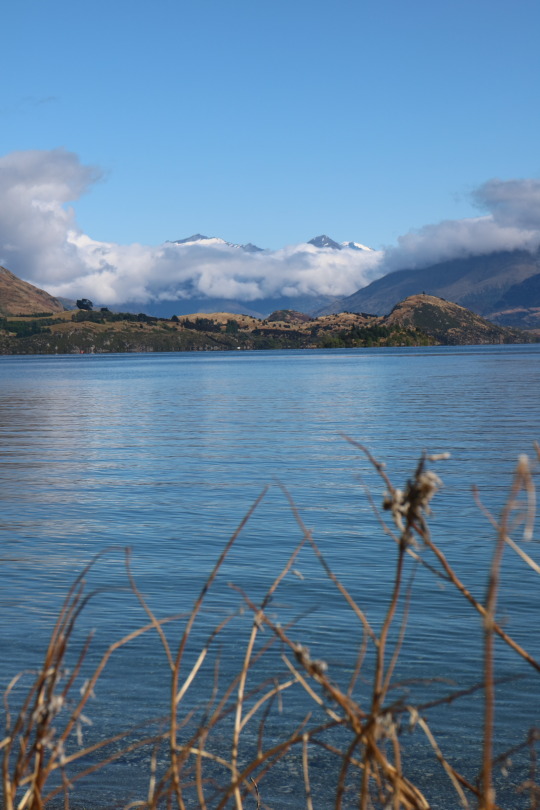
Da uns Wanaka und die Umgebung wirklich gut gefallen haben (ein aktiver Ort mit großem Angebot für Unternehmungen, malerischer und mit traumhafter Kulisse) blieben wir noch eine weitere Nacht (dieses Mal wieder mit UWE) und erklommen am nächsten Tag bei einer 6-stündigen Wanderung den Roys Peak – was für ein Erlebnis und was für eine Aussicht - Atemberaubend schön!

Nachdem uns die Wanderung wieder etwas vitalisiert hatte, beschlossen wir den Nachmittag/Abend zu nutzen und noch am selben Tag bis zum Fox Gletscher zu fahren, um unsere Tour entlang der Westküste zu beginnen. Die Strecke war mit 4 Stunden angegeben und sollte somit eine unserer längeren durchgängigen Fahrten sein. Wir wussten zwar, dass die Strecke sehr schön sein soll aber wurden von der Natur und der Landschaft trotzdem umgehauen! Es ist atemberaubend schön und vielfältig. Seen, Berge, diverse Wälder/Regenwälder quer durch das „Haast World Heritage“ (Weltnaturerbe) und alles in einer Unberührtheit und Weitläufigkeit welche seines Gleichen sucht.
Den nächsten Tag begonnen wir wieder früh und wollten uns eigentlich auf zum Fox Glacier machen – eigentlich… Der Wanderweg war leider durch Überschwemmungen nicht passierbar. Also schauten wir uns den nahegelegenen Lake Matheson (mit Blick auf den Mount Tasman und Mount Cook) an und fuhren anschließend weiter zum Franz-Josef-Gletscher, welcher von den Wetterverhältnissen der Vortage nicht so beansprucht wurde und dessen öffentlicher Pfad zugänglich war. Der Tag war allerdings danach immer noch recht jung und wir fuhren weiter über Ross (wo wir uns eine alte Goldgräberstätte anschauten) nach Hokitika wo wir uns einen Moment am Meer gönnten (hier haben wir unser erstes Hokey Pokey Eis probiert – sagenhaft lecker) und dann einen Abstecher weiter ins Land hinein zum Hokitika Gorge machten. Dieser Flussabschnitt ist bekannt für sein kristallblaues Wasser. Bei uns war es leider etwas bewölkt, aber dadurch hatte das Wasser ein ganz spannendes Grau, welches wir so bei Gewässern auch noch nicht gesehen hatten. Gerne hätten wir hier noch etwas länger verweilt, allerdings hatten es die etlichen kleinen Sandflys mächtig auf uns abgesehen und wir waren nach kürzester Zeit zerstochen. An diesem Abend fanden wir auf dem Rückweg nach Hokitika einen süßen kostenfreien Campingplatz zwischen einer Alpacca-Weide, einer Wiese mit einem großen Schwein und Hühnern – einfach toll 😊
Am nächsten Morgen stellten wir dann fest, dass auf der anderen Straßenseite ein Reittournier stattfand und sämtliche junge Mädchen aus der Gegend auf ihren Ponys und Pferden angeritten kamen. Ein guter Start in den Tag. Nach einem weiteren Besuch in Hokitika (und einem Geburtstagsanruf über eine Free-Wifi-Telefonzelle bei Abele) führte unser Weg uns über Lake Brunner (an welchen wir leider nicht richtig rankamen, da dort ein Radrennen stattfand) und über eine weitere, sehr interessante alte Goldmiene nach Greymouth. Da einer von Lucas FlipFlops reiß-ausgenommen hatte und irgendwo zwischen Wanaka und Fox Gletscher unautorisiert das Auto verlassen hatte, nutzten wir einen kurzen Regenschauer in Greymouth um für Luca neue FlipFlops zu besorgen und unsere Kühlbox mal wieder mit Essen zu füllen. Timing ist halt alles – mit einem wieder gut ausgestattetem Camper und Sonnenschein genossen wir die Wellen am Strand und liefen danach noch den Point Elisabeth Walk – welcher der bisher spektakulärste und einsamste war – und genossen am Ziel den exklusiven Blick (wir waren vollkommen alleine) auf das stürmische Meer und eine Seehund-Familie, welche sich auf den raunen Felsen sonnte.

Unsere Tage beginnen immer sehr früh und die Sonne geht erst spät unter und somit nutzten wir unsere Zeit und fuhren noch am selben Abend die ersten Kilometer auf der Great Coast Roat bis zu den Pancake Rocks. Die Namen beider Sehenswürdigkeiten sind Programm. Die Great Coast Road verläuft direkt an den Klippen, fast auf dem Meer (zurecht als einer der schönsten Highways der Welt bekannt) und schlängelt sich über etliche Kilometer an der Westküste entlang – die Pancake Rocks sehen tatsächlich aus wie große Berge aufeinander gestapelter Pfannkuchen und sind besonders am Abend, bei langsam untergehender Sonne und rauer werdendem Meer ein echtes Spektakel, wenn die Wellen in die Buchten spülen und an den Felsen brechen. Nach den Pancake Rocks war dann aber auch dieser Tag einmal zu Ende.
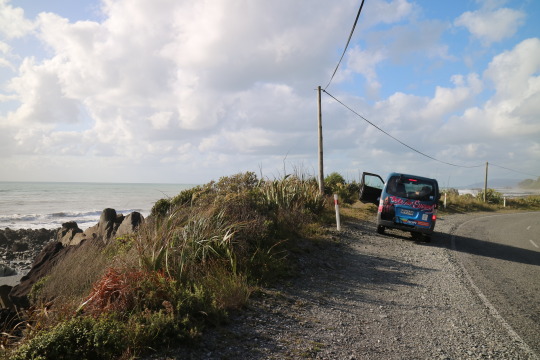

Bei wieder schönstem Wetter und nach einem warmen Frühstück mit anschließendem Strandspaziergang führte unser Weg uns wieder auf die Great Coast Road und zum Fox River.
Beim Fox River wanderten wir los um einen Track zu laufen, welcher durch mehrere kleine Höhlen führen sollte – auch hier hatte der Regen jedoch seine Spuren hinterlassen und der Weg zu den Höhlen war leider durch einen Erdrutsch versperrt. Also liefen wir wieder zurück zum Parkplatz (wo auch zufällig der jeden Sonntag stattfindende Fox River Market war) und genossen weiter die Strecke bis nach Westport wo wir uns eine Seehundkolonie in freier Wildbahn anschauten und die letzte Gelegenheit zum Tanken vor unserer Weiterfahrt gen Norden nutzten. Das Tagesziel für heute – Motueka am Rande des Abel Tasman National Park, welches wir über eine wieder spannende Landschaft, geprägt von Weinbergen und Hofpen-Anbau erreichten.
In Motueka besuchten wir am nächsten Morgen direkt die I-Site um uns für den Folgetag einen Kajakausflug im Nationalpark zu buchen (UWE hat durch seinen schlechten Zustand einiges an Geld wieder in die Reisekasse gespült, sodass wir uns dieses Highlight einmal ganz bedenkenlos gönnen konnten). Für diesen Tag war allerdings nach den ereignisreichen Vortagen erst einmal Entspannung angesagt und somit bekamen wir in Kaiteriteri am Strand schon einmal einen Vorgeschmack von der beeindruckenden Landschaft im Nationalpark.
Voller Vorfreude und mit einigen Ladungen an Sonnencreme im Gesicht machten wir uns dann einen Tag später in Marahau auf zu unserem Kajak-Verleih. Wir hatten uns am Vortag bereits über die ganzen Trecker gewundert, welche entlang des Wassers geparkt standen – heute sollten wir die Antwort erhalten. Wir hatten uns für einen Ausflug entschieden, welcher uns per Wassertaxi zur Torrent Bay bringen sollte, von welcher aus wir dann 9 km zum Observation Beach wanderten um dort unseren Guide zu treffen und mit dem Kajak auf dem Meer zurück nach Marahau zu fahren. Es hat auch alles wunderbar geklappt und es war eine sagenhafte Erfahrung in mal wieder spektakulärer, umwerfender Natur. Und wir wissen jetzt auch, was es mit den Treckern auf sich hat: diese ziehen einen Anhänger mit dem Wassertaxi (Boot) und Passagieren beladen. Das heißt, man steigt bei dem Taxiunternehmen auf das Boot, wird dann auf dem Anhänger von dem Trecker bis hinein ins Meer gezogen und dann bei einem Rückwärtsmanöver mit Vollbremsung vom Anhänger abgeladen – muss man mal erlebt haben – kann man sich nur schwer vorstellen – wäre in Deutschland sicherlich verboten.
Mit dem Wassertaxi ging es dann also nach Torrent Bay (einer kleinen Bucht mit lediglich ein paar kleinen Gästehäusern für Wanderer, welche eine mehrtägige Wanderung unternehmen), dort starteten wir unsere Wanderung welche uns auf einem kleinen, gewundenen Pfad über „Cleopatras Pool“ die Küste entlang führte.
Dank unseres ordentlichen Lauftempos waren wir gut 45 Minuten vor erwarteter Zeit am Ausgangspunkt für unsere Kajak-Tour und konnten am Strand noch eine ausgiebige Mittagspause genießen bevor es dann endlich aufs Wasser ging. Neben unserem Guide Corbin waren nur noch zwei junge Britinnen mit uns unterwegs, welche sich als sportlich und koordinatorisch als mäßig talentiert rausstellten – sie sind die ganze Zeit im Zickzack oder im Kreis gefahren und haben Corbin und uns regelmäßig gerammt.
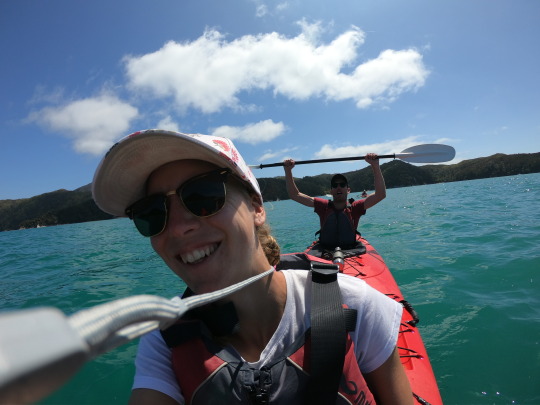
Da wir nach einem erneut ereignisreichen Tag keine große Lust auf eine längere Weiterfahrt hatten, beschlossen wir im Anschluss nochmals eine Nacht auf dem kostenfreien Parkplatz in Motueka zu verbringen. Am nächsten Morgen ging es dann in aller Frühe (der Parkplatz muss leider bis 7:00 Uhr geräumt sein) weiter Richtung Nelson. Mit den Städten in Neuseeland ist es jedoch bis Weilen etwas schwierig. Diese gleichen in der Regel nämlich mehr dem was wir ein Dorf nennen und konnten die in Prospekten recht hochgeschraubten Erwartungen bisher nur in ein paar Fällen erfüllen. So auch Nelson, eigentlich ein ganz netter Ort, aber um einen ganzen Tag zu füllen hat es dann doch nicht gereicht. Also nach einem weiteren Werkstattbesuch (wir versuchen noch immer den Steinschlag aus Woche 1 zu beheben, doch auch dieses Mal ohne Erfolg) weiter Richtung Picton, denn wir hatten für Donnerstag, also heute, eine Fähre zur Nordinsel gebucht. Da wir die Reiseplanung für den Norden noch etwas vorantreiben wollten haben wir uns auf halber Strecke auf einem kleinen, süßen und kostenfreien Campingplatz (ausgelegt für 6 Fahrzeuge – wir waren eines der ersten – am Ende haben sich jedoch über 20 Autos reingequetscht) eingerichtet um noch etwas zu entspannen und zu planen.
Der nächsten Morgen sollte eigentlich entspannt starten fand aber durch eine Armada an Sandflies ein jähes Ende und so wurde das Frühstück an einen weiteren kleinen Platz entlang der Strecke durch Neuseelands größte Weinregion verlegt. In Picton angekommen erkundeten wir noch ein wenig den Ort um anschließend für unsere Fähre einzuchecken. Die Fährstrecke gilt als eine der mit Abstand schönsten der Welt und sie hat unsere Erwartungen um Längen übertroffen. Die Fahrt auf der Cook-Straße ist wirklich absolut spektakulär und führt direkt durch die Fjorde der Marlborough Sunds (ganz im Norden der Südinsel) bis nach Wellington. Da es mit Camper ohne Fähre nun mal nicht geht, definitiv ein mehr als lohnenswertes „Übel“ 😉. Kurz vor Fahrtantritt haben wir noch schnell den Kilometerstand gecheckt und waren dann doch etwas erschrocken wie viel wir im Süden tatsächlich abgespult hatten…Nun also die Nordinsel. Wir sind gespannt und voller Vorfreude!
2 notes
·
View notes
Photo

Industrial IoT: From disruption to opportunity (Josef Brunner, Relayr) Industrial IoT: From disruption to opportunity (Josef Brunner, Relayr)
0 notes
Text
Public prosecutor says Moonie Doomsday cult dad should be released
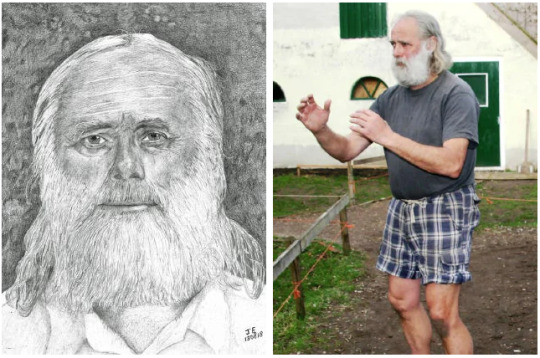
▲ Gerrit-Jan Van Dorsten
February 18, 2021 DutchNews.nl
The public prosecution department said on Thursday that it wanted to drop the case against a ‘Doomsday cult’ father who kept six of his children locked up in a farmhouse for nine years in a Drenthe village because he does not have the mental capacity to understand what is going on.
Evidence from medical experts given at a preliminary hearing in Assen earlier this month also pointed to the same conclusion. Nevertheless, the prosecutor told judges in Assen on Thursday that the decision will hit the four older children hard. ‘They have told us that they consider it very important their father be prosecuted and hope that the court will affirm what an enormous wrong has been done to them,’ the prosecutor said.
The father, 68-year-old Gerrit Jan van D, had a stroke several years before the family were discovered in October 2019, after the eldest son turned up at a bar in the nearby village of Ruinerwold. Then the story of how he and his five siblings had been held captive by their father for nine years gradually emerged.
Evil spirits
At a previous hearing in January 2020, prosecutors said Van D. had run the household as a religious commune, punishing his children for ‘evil spirits’ by refusing to feed them or putting them into solitary confinement. Van D is accused of the false imprisonment and the sexual abuse of his children.
A statement by the four older children was read out in court on Thursday. In it, they said that their father still has control over their younger siblings. ‘People say he is no longer a danger but that is not so,’ the statement said.
We have been systematically indoctrinated by him since birth. The youngest have no resistance… we would like to see a safe distance between him and our brothers and sisters so they can develop into individuals with their own future.’
The final decision on whether or not Van D should face trial will be made by the court on March 4.
https://www.dutchnews.nl/news/2021/02/public-prosecutor-says-doomsday-cult-dad-should-be-released/
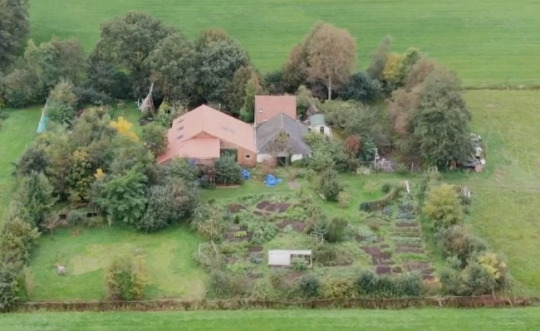
From other reports:
They said that Gerrit-Jan Van Dorsten, 68, would be too ill to follow the trial proceedings.
He was charged with unlawful detention, child abuse, sexual abuse of two of the children, and money laundering in January last year.
Mr Van Dorsten suffered a stroke in 2016 which left him with a string of health problems, including vision and memory loss.
Prosecutors told a court hearing on Thursday: "It is impossible that the suspect will be able to follow the criminal proceedings and participate."
But the decision to investigate Mr Van Dorsten divided his adult children, with the eldest four supporting his arrest. The five younger siblings said they did not agree with the police investigation.
A statement from the eldest four was read in court on Thursday. They said they hoped their "indescribable suffering" would still be recognised.
"In all their vulnerability, [the children] have stated at length about terrible things they endured in their youth and young adulthood," the prosecution statement said.
What's the background?
Police found Mr Van Dorsten and five of his children in the isolated farmhouse near Ruinerwold village, north-east of Amsterdam.
Officers then arrested Mr Van Dorsten and a 58-year-old Austrian man named Josef Brunner.
Mr Brunner is an alleged accomplice who paid the rent on the farmhouse. He has been freed on bail pending his trial and denies wrongdoing.
Three of the children were not living at the farm but were still subject to abuse, prosecutors alleged.
Mr Van Dorsten often withheld water and food from his children out of a religious conviction that it was for their own good, they said in court last year.
He was accused of tying one child up and keeping another in a doghouse for an entire summer.
"The children all speak of very serious physical punishment if their father thought there was a 'bad spirit' in them," prosecutors said. "That happened from a very young age, four or five years."
The children were not registered with the authorities and had never attended school. Five of the children have since received counselling.
____________________________________________
Rev. Young Whi Kim testifies about Gerrit van Dorsten
The two captors of the Dutch family held for 9 years had both been members of the Family Federation or Unification Church
‘John Eagles’ is Gerrit Jan van Dorsten – who ‘imprisoned’ six of his own children on a farm.
John Eagles video: “Each Soul is a Mirror”
Gerrit Jan van Dorsten, ‘Father Moon’ and the Divine Principle in his providence
2 notes
·
View notes
Text
ZdJ-Chef fordert Offenlegung der Verfassungsschutz-Akte von NS-Verbrecher Brunner
ZdJ-Chef fordert Offenlegung der Verfassungsschutz-Akte von NS-Verbrecher Brunner
Der Chef des Zentralrats der Juden (ZdJ) fordert die Offenlegung der Verfassungsschutz-Akte des NS-Verbrechers Alois Brunner.

Foto: Symbolbild/Archiv
Der Präsident des Zentralrates der Juden in Deutschland, Josef Schuster, fordert die Offenlegung der Verfassungsschutz-Akte über den NS-Verbrecher Alois Brunner. Am morgigen Mittwoch verhandelt das Bundesverwaltungsgericht in Leipzig auf…
View On WordPress
0 notes
Photo

Mapping how words leap from brain to tongue
When you look at a picture of a mug, the neurons that store your memory of what a mug is begin firing. But it's not a pinpoint process; a host of neurons that code for related ideas and items -- bowl, coffee, spoon, plate, breakfast -- are activated as well. How your brain narrows down this smorgasbord of related concepts to the one word you're truly seeking is a complicated and poorly understood cognitive task. A new study led by San Diego State University neuroscientist Stephanie Ries, of the School of Speech, Language, and Hearing Sciences, delved into this question by measuring the brain's cortical activity and found that wide, overlapping swaths of the brain work in parallel to retrieve the correct word from memory.
Stephanie K. Riès, Rummit K. Dhillon, Alex Clarke, David King-Stephens, Kenneth D. Laxer, Peter B. Weber, Rachel A. Kuperman, Kurtis I. Auguste, Peter Brunner, Gerwin Schalk, Jack J. Lin, Josef Parvizi, Nathan E. Crone, Nina F. Dronkers, Robert T. Knight. Spatiotemporal dynamics of word retrieval in speech production revealed by cortical high-frequency band activity. Proceedings of the National Academy of Sciences, 2017; 114 (23): E4530 DOI: 10.1073/pnas.1620669114
Most adults can quickly and effortlessly recall as many as 100,000 regularly used words when prompted, but how the brain accomplishes this has long boggled scientists.Credit: © BillionPhotos.com / Fotolia
70 notes
·
View notes
Text
Munich Re buys IoT middleware startup, relayr, in deal worth $300M
Berlin based Internet of Things (IoT) startup relayr, whose middleware platform is geared towards helping industrial companies unlock data insights from their existing machinery and production line kit by linking Internet connected sensors and edge devices to platform controls, has been acquired by insurance group Munich Re in a deal which values the company at $300 million.
relayr was founded back in 2013 with the initial aim of helping software developers hack around with hardware, at a time when developer interest in IoT was just taking off.
The startup went on to pass through startupbootcamp and crowdfunded a cute looking chocolate-bar shaped hardware starter kit before expanding into building a hardware agnostic cloud services platform to act as a central hub for data flows. relayr then further honed its focus to the needs of industrial IoT, and its platform — which is now used by around 130 businesses — offers end-to-end middleware combined with device management and IoT analytics, and can operate in the cloud, on-premise or a hybrid of both depending on customers needs.
We first covered the Berlin-based startup back in 2014 when it closed a $2.3M seed round. It’s raised $66.8M in total, according to Crunchbase, which includes a $30M Series C round in February led by Deutsche Telekom Capital Partners.
relayr did not disclose the investors in its 2014 seed at the time, saying only that they were unnamed U.S. and Switzerland-based investors. But Kleiner Perkins and Munich Re (via its HSB subsidiary which is acquiring relayr now) were named as investors in later rounds, along with Deutsche Telekom .
Insurance giants and telcos have a clear strategic interest in IoT — with the technology promising to drive network usage and utility on the telco side, and offering transformative potential for the insurance industry as data streams can be used to monitor equipment performance and predict (and even steer off) costly failures.
Munich Re said today that its HSB subsidiary is acquiring 100% of relayr in a deal that values the business at $300M. (It’s not clear if it’s all cash or a mix of cash and stock — we’ve asked). It says the deal will help it “shape opportunities in the fast-growing IoT market”, and is envisaging a joint business model with the combined pair developing not just tech solutions for clients but risk management, data analysis and financial instruments.
“IoT is already significantly changing our world and has the potential to disrupt the traditional insurance and reinsurance industry through new business models, services and competitors,” said Torsten Jeworrek, member of Munich Re’s board of management in a statement. “I am truly happy to announce this acquisition, as it supports our strategy to combine our knowledge of risk, data analysis skills and financial strength with the technological expertise of relayr. This is our basis to develop new ideas for tomorrow’s commercial and industrial worlds.”
“We are delighted to strengthen our relationship with Munich Re/HSB to push digitalization in commercial and industrial markets and strive for our mission to help commercial and industrial businesses stay relevant,” added relayr CEO, Josef Brunner. “The unique combination of the companies demonstrates the importance to deliver business outcomes to customers and the need to combine first-class technology and its delivery with powerful financial and insurance offerings. This transaction is a great opportunity to build a global category leader.”
The pair have been partnered since 2016, when the insurance firm invested in relayr’s Series B, but say they see the acquisition strengthening Munich Re’s financial and insurance offerings while also offering a route to expand relayr’s middleware business via leveraging the insurance group’s large client base.
“Back in 2016, HSB invested in relayr in an effort to harness the strategically significant business potential offered by IoT. relayr’s end-to-end IoT solutions for the industrial and commercial sectors are an ideal addition to our Group’s capabilities,” said Greg Barats, president and CEO of HSB, and the person responsible for Munich Re’s IoT strategy, in another supporting statement. “HSB has always focused on insurance and technology… relayr will help us to rapidly implement our global strategy to develop new IoT solutions for our clients. Digital transformation in the industrial and commercial sectors offers opportunities for new services and financial applications.”
relayr says it already offers industrial companies which are seeking to digitalise their businesses a “comprehensive range of services” — such as being able to extract and analyse data from machines and equipment to determine when a machine is likely to fail (and it touts cutting costs, increased energy efficiency and product quality improvement as among the benefits its platform offers) — but says the acquisition will allow it to develop its “innovative value stack”, by enabling new revenue models, cost reduction, and “increased effectiveness across industries”.
It also sees benefit in sitting under the established Munich Re umbrella — as a way to convince customers it will be a long-term business partner. It adds that it will continue to maintain its current focus on IoT for the industrial sector.
0 notes
